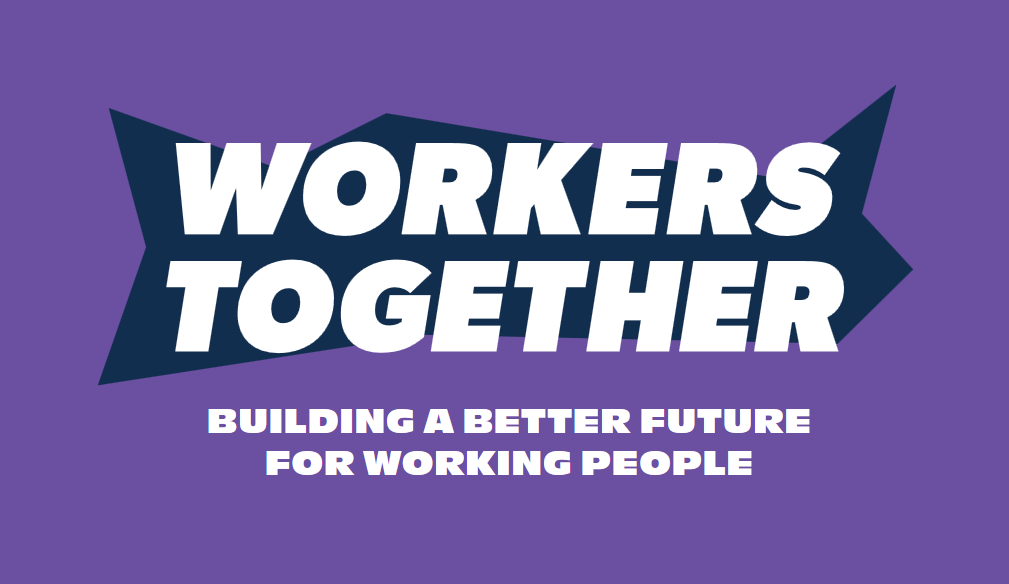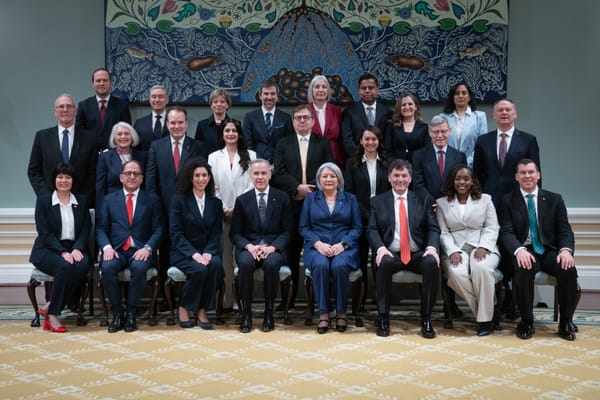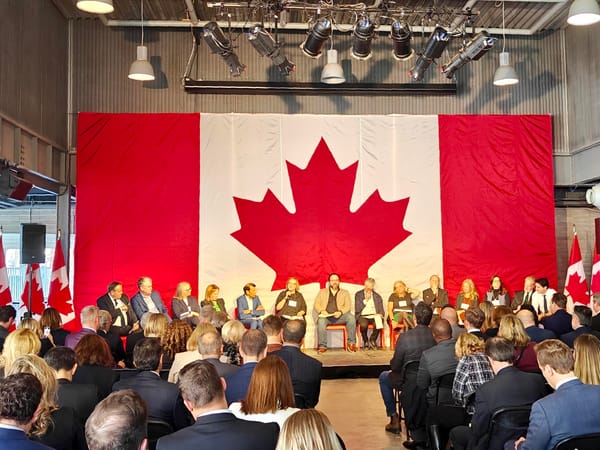
Today is the National Day for Truth and Reconciliation, a time not only to reflect on the genocide committed by the Canadian state against Indigenous peoples but also to think critically about the work of reconciliation in the present and future.
Building such relations of solidarity must involve addressing the needs of Indigenous workers in Canada. While Indigenous peoples have long engaged in waged labour — and have at various points played important roles in the labour movement — their contributions as workers are too often neglected.
There remains a tendency to overlook the fact that Indigenous peoples are overwhelmingly working class, experiencing many of the same hardships and fighting many of the same battles as other workers. At the same time, historical and ongoing colonialism, racism and exploitation visit unique oppressions on Indigenous workers. A strong labour movement not only needs Indigenous workers but also needs to fight the injustices these workers face.
Indigenous peoples are a growing share of the population in Canada. According to the 2021 Census, Indigenous peoples make up 5 per cent of the population, following years of relatively steady population growth.
As well, Indigenous migration to urban centres has grown appreciably over the last several years, bringing the total Indigenous urban population to more than 800,000. In many Canadian cities, such as Winnipeg, Edmonton and Vancouver, Indigenous peoples account for significant proportions of the local population. Winnipeg, for example, has an Indigenous population of more than 102,000 people, roughly 12 per cent of the city’s population.
Moreover, because Indigenous peoples are on average younger than the non-Indigenous population, a greater share of them are working age. In 2021, the average age of Indigenous people in Canada was 33.6 years, compared to 41.8 for the non-Indigenous population.
Although many Indigenous peoples still live on reserves or in rural areas, the population on the whole is more urban than ever before, and much younger and working class when compared to the non-Indigenous population. It follows that if the labour movement is committed to improving Indigenous rights and well-being it must address Indigenous peoples as workers.
And indeed there’s much to improve. Across a range of measures, Indigenous workers face economic hardships, from lower levels of employment and earnings, to higher unemployment, a lack of training opportunities, and racism and discrimination at work.
Statistics Canada’s “quality of employment” measurements indicate that, on a range of indicators, Indigenous workers fare much worse than the non-Indigenous population.
As of 2022, the average hourly wages of First Nations workers were more than 13 per cent lower than those of non-Indigenous workers. Moreover, nearly one-in-four First Nations people reported earning “low pay,” compared to 18.5 per cent of their non-Indigenous counterparts.
Low pay of course translates into a low annual income and greater risk of living in poverty, even when employed. According to the last Census figures from 2021, nearly one in five Indigenous people living off reserve were in a low-income houseland (based on the official low-income, after-tax measurement), compared to a little more than one in 10 non-Indigenous people. The median income of the non-Indigenous population in 2020 was $50,400, compared to $43,200 for Indigenous people without status, $42,000 for Indigenous people living off reserve with status, and $32,000 for Indigenous people with status living on-reserve. Although these gaps have narrowed somewhat over previous decades, they are still significant and unjustifiable.
When it comes to the employment rate, Indigenous peoples continue to fall behind the non-Indigenous population. According to the Census, between 2001 and 2021, the employment rate of Indigenous workers living off reserve grew from 56.4 per cent to 58.7 per cent. By contrast, despite a slight decline over this same period, the non-Indigenous employment rate was more than 15 percentage points higher, at 74.1 per cent in 2021. Among Indigenous peoples living on-reserve, fewer than half (47.1 per cent) were employed in that year.
Unemployment as well tracks much higher among Indigenous workers than their non-Indigenous counterparts. Among the Indigenous population nationally, unemployment averaged 8.8 per cent in 2023, compared to 5.4 per cent for the Canadian population as a whole. Although the relatively tighter post-pandemic labour movement improved conditions for Indigenous workers momentarily (reducing their unemployment to 8 per cent in 2022), a labour market softened by high interest rates, fiscal retrenchment and population growth has begun to undercut those temporary gains.
The post-pandemic unemployment figures, however, do represent a marked improvement from previous years. From 2007 to 2019, for example, the unemployment rate of Indigenous people living off reserve averaged 12.1 per cent, compared to 6.8 per cent for the non-Indigenous population in Canada. During the 2008-10 recession, Indigenous unemployment reached 14.5 per cent, far higher than the 8.3 per cent experienced by the non-Indigenous population. When the Métis population is removed from the calculation, the contrast is even starker. First Nations unemployment averaged 14.3 per cent, peaking at 17.7 per cent in 2010. Moreover, the national figures disguise significant regional disparities across the country. In the Atlantic provinces, it was not uncommon for more than 15 per cent of Indigenous workers to be unemployed during this period. In the Western provinces, unemployment, particularly among First Nations peoples, also consistently tracks higher than the national Indigenous average.
When it comes to precarious forms of employment, Indigenous workers are similarly disadvantaged. For example, more than one-quarter of First Nations peoples worked part-time involuntarily in 2022, much higher than the share of non-Indigenous workers who did so (18.6 per cent). Similar trends are apparent for working irregular and unpredictable hours and shifts (24 per cent for First Nations workers vs. 15.5 per cent for the non-Indigenous population). As well, First Nations workers are more likely than other workers to have short job tenure of less than 12 months (24.3 per cent vs. 19.1 per cent), an significant indicator of labour market insecurity.
The consequences of these various labour market inequalities were on full display during the COVID-19 pandemic, as Indigenous workers were hit especially hard by job and income losses. Because of their concentration in low-paying jobs with limited job security, Indigenous workers were more likely to lose work and suffer adverse economic consequences than non-Indigenous workers. Moreover, following the lockdown period, it took longer for Indigenous employment levels to recover.
Indigenous peoples’ relegation to low quality employment, often with limited access to skills training opportunities, is also recognized by bodies beyond Canada. The Organisation for Economic Co-operation and Development (OECD), for example, has called for greater policy attention to skills development and inclusive employment for Indigenous workers in Canada.
Although access to skills training and education are important, other research suggests that fighting discrimination and the overrepresentation of Indigenous workers in precarious forms of employment are unlikely to be solved by education and training alone. Despite Indigenous peoples’ educational attainments improving considerably in recent years, their confinement to poor quality jobs with low earnings persists. It will be impossible to address the income inequality between Indigenous and non-Indigenous peoples without improving the quality of jobs that Indigenous workers find themselves in.
At the same time, fighting the occupational segregation and subpar job quality faced by Indigenous workers means confronting racism and discrimination on the job. Troublingly, according to the 2016 General Social Survey, First Nations people living off reserve were six percentage points more likely to report experiencing discrimination at work than non-Indigenous people (15.2 per cent vs. 9.1 per cent). Such discrimination has serious mental and occupational health consequences. It also impedes access to better work, and perhaps more importantly, drives a wedge between Indigenous and non-Indigenous workers. Racism is a tool of division.
If there is one silver lining in the employment figures of Indigenous peoples it is their membership in unions. Although Indigenous workers face the various labour market inequalities outlined above, they are actually more likely to be members of unions than non-Indigenous workers. Nearly 36 per cent of Métis workers and 34.2 per cent of Indigenous workers were covered by a collective agreement in 2022, compared to 31 per cent of non-Indigenous workers.
These slightly higher unionization rates are driven by higher shares of Indigenous workers in public sector jobs, which are more likely to be unionized. Large numbers of Indigenous workers are employed in healthcare, social assistance, education and public administration, for example. If unions are going to address the many economic injustices faced by Indigenous workers, however, they will need to organize them in the private sector where they are concentrated in many low-wage and insecure jobs, especially in large urban centres.
Many unions and labour organizations have publicly committed themselves to Indigenous solidarity and reconciliation, often at the behest of rank-and-file members. Some have made organizing and outreach to Indigenous workers a priority, while others have created educational tools and collective bargaining guides to better assist leaders and members to improve the lives of Indigenous workers.
These are important and commendable developments, but there is much work still to be done. There is no use denying the tensions that have at times existed between unions and Indigenous nations, or in papering over the complexities of representing Indigenous workers when their bosses are also Indigenous. Member education among non-Indigenous workers as well as outreach and organizing with Indigenous workers remain as urgent as ever.
All those who wish to see a strong and united labour movement need to think seriously about the economic experiences of Indigenous workers and the barriers to connecting their struggles to those of all workers. In many ways, the interests of Indigenous workers and the Canadian labour movement are inextricably bound together.
Recent Class Struggle Issues
- September 24 | McGill Law Professors Have Launched An Unlimited Strike
- September 17 | Liberals Are Finding New Ways To Undermine The Right To Strike
- September 10 | Attacks On Fred Hahn Are Intended To Divide The Labour Movement
- September 3 | Canadian Autoworkers And The Changing Landscape Of Labour Politics







